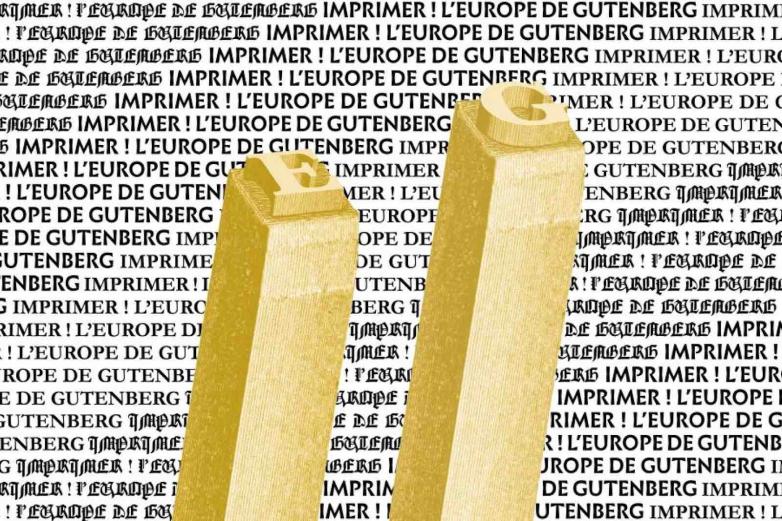New Exhibition of Printing History Opens in Paris

From the exhibition poster
In Imprimer! L'Europe de Gutenberg (Printing! Gutenberg’s Europe), the Bibliothèque nationale de France (BnF) looks back at the innovation of printing by tracing the history of its development and the keys to its success.
Running through July 16, 2023, exceptional items from the BnF collections will be presented simultaneously for the first time including the oldest known Western woodcut, the Bois Protat (late 14th or early 15th century), the oldest preserved book in the world printed using metal type, Jikji (Korea, 1377), and the first major European book printed using letterpress, the Gutenberg Bible (Germany, circa 1455).
The exhibition aims to put Gutenberg’s invention into context by pointing out, among other things, that printing methods already existed. In China and Korea, xylography was practised as early as the 8th century, and it is from Korea, with Jikji, that comes from the oldest preserved work printed with movable metal type, similar to the process used in Mainz more than seventy years later.
Although Gutenberg was probably unaware of this Korean invention, he was able to look to techniques and practices that also existed in Europe, where it was possible to print and reproduce images from around 1400 onwards using an engraved matrix, first on wood, then on copper.
The need for multiple copies in order to allow for wide distribution was also a problem that occupied the metal craftsmen with whom Gutenberg spent time during his stay in Strasbourg. His innovation was not only to combine three pre-existing techniques in the metal and graphic arts – coining, casting and transfer printing – but also to apply it to a work of unprecedented textual scope spanning nearly 1,300 pages – the Bible – with the immediate aim of putting a large number of copies on the market; more than 150 according to the accounts of the time.
In Gutenberg’s wake, printers, humanists and artists took up his process, resulting in an unprecedented burst of experimentation. The rapid development of the letterpress also guaranteed 15th century printers a high level of efficiency.
With nearly 270 items, witnesses of this trial and error and technical experiments, the exhibition aims to show the prowess and progress made possible by this innovation by following the process of book production, from the printer’s workshop to the bookseller’s stall, and from the craftsman to the reader, highlighting its collective dimension.
The letterpress workshops of the 15th century were genuine laboratories of experimentation, making it possible to overcome certain technical difficulties and encouraging the spread of printing processes throughout Europe. These techniques will be presented and explained in a space dedicated to the printer’s workshop, organised around an exceptional press on loan from the Gutenberg Museum in Mainz.















